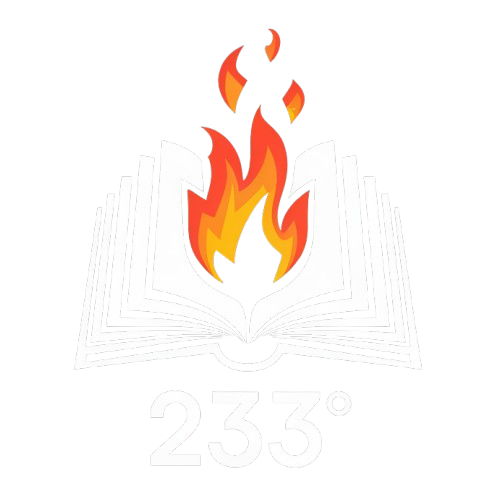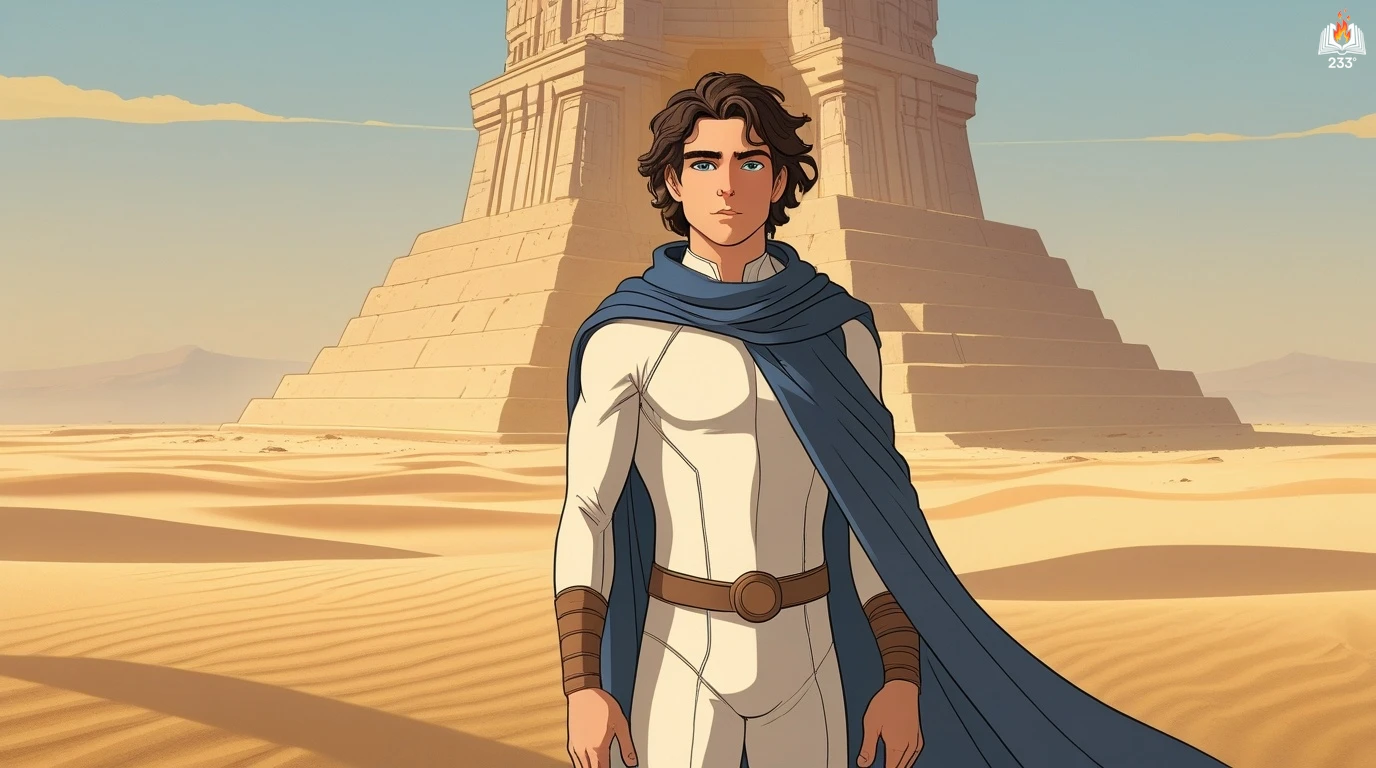Heretics of Dune by Frank Herbert, published in 1984, is the fifth novel in the legendary Dune series, a cornerstone of modern science fiction. Set 1,500 years after the reign of the God Emperor Leto II, the novel plunges into a universe reshaped by his Golden Path, where ancient factions like the Bene Gesserit, the Tleilaxu, and the newly emerged Honored Matres vie for power. This is a saga of political intrigue, prophecy, rebellion, and the desperate struggle to control humanity’s future.
Plot Summary
On the dry and unforgiving world of Rakis, once known as Arrakis, the desert stirs with secrets long buried beneath the sand. Fifteen hundred years have passed since Leto II, the God Emperor, shaped the Golden Path and bound humanity’s fate. Now, from the scattering of humanity across the stars, new powers return, threatening to unravel the delicate balance he once forged.
Sheeana, a young girl from Rakis, dances across the sand, summoning the giant worms that once obeyed no master. Her control over these legendary creatures awakens old fears and new hopes. To the Bene Gesserit Sisterhood, Sheeana is a rare prize, perhaps even a fulfillment of prophecy. The Bene Gesserit dispatch Reverend Mother Lucilla and Mother Superior Taraza to secure her, to shape her, and to fold her into their web of influence. But Sheeana, wild and unpredictable, is no easy prize.
On the planet Gammu, far from the shifting dunes, the latest ghola of Duncan Idaho trains beneath the watchful eyes of the Bene Gesserit and the military genius Bashar Miles Teg. The child, a perfect clone of the legendary Atreides swordmaster, carries within his cells the shadow of countless past lives. Twelve gholas have come before, and all have failed, assassinated or broken before they could be awakened. Now, with the universe trembling on the edge of chaos, this Duncan must live.
Teg, pulled from retirement, molds the young Duncan into a soldier and survivor. He sees in the boy not just a relic of the past but the key to the Sisterhood’s future. With calm resolve and sharp command, Teg prepares the ghola for a destiny shaped by forces even he cannot fully grasp. Yet shadows stir in the Sisterhood itself. Reverend Mother Schwangyu, assigned to Gammu, bristles against the ghola project, fearing its cost and danger. Among the Sisterhood, obedience frays, and suspicion weaves through every whispered conversation.
Far from Gammu, the Honored Matres, fierce and vengeful women returning from the Scattering, sweep through the universe like a storm. They burn with lust for power, wielding a weaponized sexuality that twists rulers and armies alike to their will. The Matres have no patience for subtlety or tradition. They strike at the Bene Gesserit and the Tleilaxu, toppling strongholds and poisoning the web of influence that once bound the universe in delicate threads.
The Tleilaxu, secretive masters of genetic manipulation, send their own emissary – Waff, a sly and devout Master, who plots and schemes in the name of his hidden faith. Waff courts the Bene Gesserit with promises of alliance while secretly preparing his people’s path toward domination. As Bene Gesserit and Tleilaxu circle one another in an intricate dance, both seek to control the genetic future of humanity.
Lucilla, charged with imprinting Duncan, wrestles with her duty and the human cost it demands. To awaken Duncan’s true self, trauma is needed – a shattering event that will rip through the ghola’s mind and unlock the flood of past memory. Lucilla prepares herself to offer love as both gift and weapon, knowing that the boy she shapes will one day surpass her designs.
Events come to a head when Teg, Duncan, and Lucilla are forced to flee Gammu. The Honored Matres descend, hungry for the Sisterhood’s secrets and blind to the ruin they leave in their wake. Teg, cunning and disciplined, uses every scrap of strategy and every hidden passage to stay ahead of their pursuers. But the enemy presses close, and sacrifice becomes inevitable.
Captured and tortured, Teg endures unspeakable pain but rises transformed. Something in his Mentat conditioning, some buried thread of the Atreides line, snaps and reforms under the strain. Teg becomes more than a commander – he becomes a force of nature, gifted with speed, reflexes, and insight beyond any human measure. With his new power, Teg becomes a living weapon, turning the tide in a universe spinning toward chaos.
Meanwhile, Taraza guides the Sisterhood through a game of risk and sacrifice. She plots to bring the Bene Gesserit and the Tleilaxu into alliance, to unite old enemies against the greater threat of the Honored Matres. The cost of such unity is steep, and the game teeters on the edge of collapse. Taraza gambles not only the lives of her Sisters but the soul of the Sisterhood itself.
Back on Rakis, Sheeana grows under the watchful eye of the Bene Gesserit, her powers deepening, her connection to the worms sharpening. The desert whispers of change. Yet the sand holds another secret – the worms themselves, once Leto II’s transformed flesh, now hold the pearl of his awareness. Even in death, the God Emperor’s shadow looms, shaping destinies, whispering through the dunes.
As battles rage and alliances fracture, Duncan faces his awakening. Trauma, betrayal, and love ignite his memories, and the twelfth ghola stands reborn. No longer a blank slate, Duncan becomes a man haunted by thousands of years, shaped by loyalty, love, and death. With Teg and Lucilla at his side, he walks a path paved by sacrifice and sharpened by purpose.
The Bene Gesserit make their final stand on Rakis, the spice world whose sands have long fed the universe’s hunger and greed. The Honored Matres storm toward them, fire and destruction in their wake. The sandworms churn beneath the surface, restless and stirring. Teg unleashes his new strength in a last desperate gambit, while Duncan becomes the axis around which the future turns. Sheeana, poised between childhood and legend, reaches toward a destiny none can fully control.
The clash on Rakis reshapes everything. Ancient powers fall, new powers rise, and through it all, the whisper of the desert remains – the echo of a God Emperor’s long-vanished footsteps, the hunger of the sandworms, the dreams of a scattered humanity seeking purpose. When the sands settle, only those who have learned to adapt, to change, to let go of the past and grasp the uncertain future, remain standing.
Main Characters
Darwi Odrade: A Bene Gesserit Reverend Mother known for her cunning, warmth, and leadership, Odrade balances pragmatism and empathy as she navigates the Sisterhood’s power struggles and political maneuvers. Her deep understanding of human nature makes her a subtle force shaping the narrative.
Miles Teg: The legendary Bashar and military genius, Teg is an aging but formidable strategist tasked with protecting Duncan Idaho’s latest ghola. His loyalty, sense of duty, and tactical brilliance fuel much of the tension and action in the novel.
Duncan Idaho (ghola): A resurrected clone of the original Atreides swordmaster, Duncan grapples with his fragmented identity, past memories, and purpose. As the twelfth ghola of Idaho, he becomes a living symbol of resilience and the human quest for self.
Sheeana: A young girl from Rakis with the unique ability to control sandworms, Sheeana is both an enigma and a potential messiah figure. Her presence unsettles the powerful, and her development becomes central to the Bene Gesserit’s plans.
Mother Superior Taraza: The sharp and calculating leader of the Bene Gesserit, Taraza navigates immense political pressures and orchestrates high-stakes gambits to preserve the Sisterhood’s influence over a fracturing universe.
Waff: A Tleilaxu Master, Waff is devout, secretive, and manipulative. He believes in reshaping humanity through genetic engineering and holds a dangerous belief in his religious mission.
Lucilla: A Bene Gesserit Imprinter tasked with shaping Duncan’s development, Lucilla is torn between duty and personal affection, embodying the tensions between the Sisterhood’s manipulation and genuine human connection.
Theme
Power and Control: The struggle between factions to control humanity’s destiny underscores the novel. Whether through military force, religious influence, or genetic manipulation, each group seeks dominance, reflecting on the corrupting allure of power.
Identity and Memory: Duncan Idaho’s ghola arc and Sheeana’s rise explore how memory shapes identity. Questions of who we are—formed by past lives, choices, or imposed roles—echo through the characters’ journeys.
Religion and Myth: The legacy of Leto II and the worship of sandworms probe how religion can unify or enslave. Myth becomes both a tool and a trap, wielded by the Bene Gesserit, the Rakian priests, and others.
Adaptation and Evolution: The desert ecosystem, the transformation of Rakis, and humanity’s post-Scattering evolution highlight Herbert’s preoccupation with survival, adaptability, and the costs of stagnation or change.
Freedom vs. Destiny: The novel questions whether true freedom exists when forces like prophecy, genetic conditioning, and societal expectations shape every path. The tension between predetermined fate and the possibility of choice runs throughout.
Writing Style and Tone
Frank Herbert’s writing in Heretics of Dune is dense, layered, and richly philosophical. He constructs a world filled with political intrigue and esoteric knowledge, employing shifting perspectives that allow the reader to inhabit the minds of diverse characters. The prose balances dialogue heavy with subtext and interior monologues filled with meditations on power, loyalty, and survival. His use of invented terms, religious aphorisms, and historical records gives the novel a mythic texture, demanding active engagement from the reader.
The tone of the novel is cerebral, intense, and often foreboding. Herbert’s vision of the far future is not a sleek, utopian dream but a fragmented, dangerous world where survival hinges on cunning and adaptability. There is little sentimentality; even moments of tenderness are often shadowed by manipulation or larger political designs. Yet beneath the grand scale lies a persistent concern for the human condition, making the narrative resonate on both a cosmic and intimate level.
We hope this summary has sparked your interest and would appreciate you following Celsius 233 on social media:
There’s a treasure trove of other fascinating book summaries waiting for you. Check out our collection of stories that inspire, thrill, and provoke thought, just like this one by checking out the Book Shelf or the Library
Remember, while our summaries capture the essence, they can never replace the full experience of reading the book. If this summary intrigued you, consider diving into the complete story – buy the book and immerse yourself in the author’s original work.
If you want to request a book summary, click here.
When Saurabh is not working/watching football/reading books/traveling, you can reach him via Twitter/X, LinkedIn, or Threads
Restart reading!








